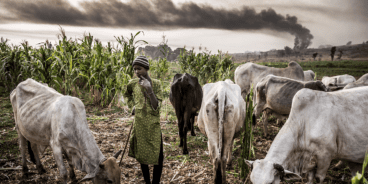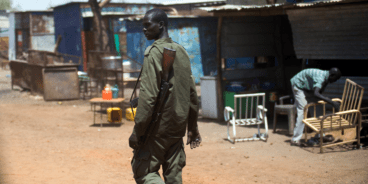
Statement on Peace Celebrations in South Sudan
Today, 31 October, the government and people of South Sudan celebrated peace and the Revitalized Agreement on the Resolution of the Conflict in the Republic of South Sudan (R-ARCSS), which was signed on 12 September. By formally ending the civil war that started during December 2013, the R-ARCSS presents an opportunity for South Sudan to overcome its crippling humanitarian crisis and ensure that for the first time in five years its people should no longer have to live in fear of the predations of competing military forces, ethnic militias and other armed groups.
It is unknown exactly how many people died during South Sudan’s civil war, with estimates varying from between 50,000 to 400,000 people. As rival sections of the military and allied militias competed for power and territory, all sides appeared manifestly unwilling and unable to uphold their Responsibility to Protect, committing crimes against humanity and war crimes. Various credible international investigations have confirmed that during the civil war tens of thousands of civilians were subjected to sexual violence, killed, deliberately starved, and continually targeted for their ethnicity and presumed political affiliation. As a result of the conflict more than 6.1 million people in South Sudan are currently severely food insecure, including 1.7 million people who remain on the brink of famine.
The R-ARCSS should be judged on its ability to end atrocities and armed conflict in South Sudan once and for all. Despite numerous previous failed peace agreements, there is reason for cautious but genuine optimism with regard to the R-ARCSS. Brokered by regional powers, it represents a significant diplomatic attempt to re-establish a power-sharing government. Uganda and Sudan are acting as guarantors of the new peace agreement. Hopefully all parties will now recognize that there is no viable military solution to the internecine power struggles between South Sudan’s rival political leaders.
Since the signing of the R-ARCSS in September, the ceasefire has largely been maintained and armed violence has reduced throughout the country. On 22 October the government inaugurated the National Constitutional Amendment Committee, mandated to ensure that the constitution is in line with the R-ARCSS. Despite these positive signs, more needs to be done to close the deficit of trust between parties to the peace agreement, including by expanding democratic space, releasing all political prisoners, and including women in the implementation process. Humanitarian access to vulnerable populations must also be extended to all parts of the country.
A final crucial way that the government can demonstrate its commitment to a lasting and sustainable peace is by ending impunity and holding perpetrators accountable for past atrocity crimes. Without any further delay, the government should work with the African Union to establish the long overdue Hybrid Court for South Sudan. War criminals and perpetrators of crimes against humanity, regardless of their position or affiliation, should not be granted amnesty. South Sudan has experienced recurring armed conflict and atrocities for the majority of the country’s seven years of independence. Accountability and justice would show the people of South Sudan and the world that this peace agreement is a genuine break with the past.
Related Publications


Atrocity Alert No. 441: South Sudan, Ukraine and Democratic Republic of the Congo
